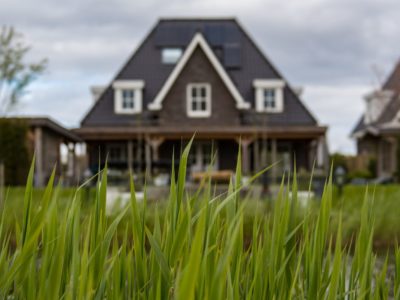What is the future of sustainable drainage systems?
Sustainable drainage systems (SuDS) help to mitigate surface water flooding by lowering flow rates and increasing water storage.
This effective water management approach, which also helps to reduce pollution into the water systems and alleviate the pressures on our outdated sewerage systems, is expected to be mandatory in England from 2024 after the Department for Environment, Food and Rural Affairs (DEFRA) said it would implement Schedule 3 of the Flood and Water Management Act 2010 in England to better control flooding and wastewater discharges.
The schedule will provide a framework for the approval and adoption of sustainable drainage systems to regulate rainfall and decrease the volume of water flowing into sewers and storm overflow discharges.
What are the Schedule 3 changes?
According to the government, introducing Schedule 3 will “reduce the risk of surface water flooding, pollution and help alleviate the pressures on our traditional drainage and sewerage systems”.
The final decision as to how Schedule 3 will be implemented is underway, with a public consultation planned for later this summer. This will collect views on the impact assessment, national standards and statutory instruments.
It will also look at what support would be needed to implement it. At the same time, a review will examine the skills gap that would need to be addressed and will also investigate the training required for the SuDs Approval Boards (SABs), which are likely to sit with the local authorities.
With Schedule 3 expected to become mandatory, it is vital developers can show they have considered surface water drainage as part of any development process. This will be through a Drainage Strategy report, which will show how surface rainwater will be managed to mitigate flood risk and not aggravate it.
This report should examine the most appropriate solutions for the site and could include the following:
- Green roofs
- Surface water pumps
- Soakaways
- Swales
- Rainwater harvesting
- Permeable paving
- Attenuation tanks.
Why are SuDS so important?
Current urban drainage systems unable to cope with excessive amounts of water cannot be overstated; without green infrastructure, the damage caused by flooding will only increase.
A Climate Change Committee report has warned that almost 200,000 properties in England might have to be abandoned by 2050 because of rising sea levels, and the Energy and Climate Intelligence Unit predicted some 35,000 hectares of horticultural and arable land are at risk of flooding every three years. By the 2080s, this could reach 130,000 hectares of high-quality land.
It is vital that solutions are put in place to help reduce this risk, and SuDS are a natural solution.
What can be done to reduce flood risk?
Green infrastructure should play a key role: more trees to capture rainwater and to cool down environments and systems built in that direct groundwater away from sewers and into ponds and other water-capture infrastructure. As new developments are created, more robust systems need to be introduced to minimise flood risk. This means the inclusion of more porous systems, such as sand and gravel, green roofs and walls, as they help to reduce stormwater runoff, which can overwhelm the sewer system.
Roofs can also provide an important opportunity to help with sustainable drainage systems. According to a report by the Engineering Exchange for Just Space and the London Sustainability Exchange, roofs make up between 40% and 50% of impermeable surfaces in urban areas, presenting a significant opportunity f they could be adapted to absorb rainwater rather than repel it.
Water pollution is another huge problem caused by urbanisation and something which can be remedied by green infrastructure, which behaves as a buffer by lessening the runoff of contaminated stormwater flowing into rivers, natural environments and sewers.
For more information on sustainable drainage systems and how GeoSmart’s SuDSmart drainage reports can ensure your development or property understand how to deal with surface water flooding, visit our SuDSmart page.



